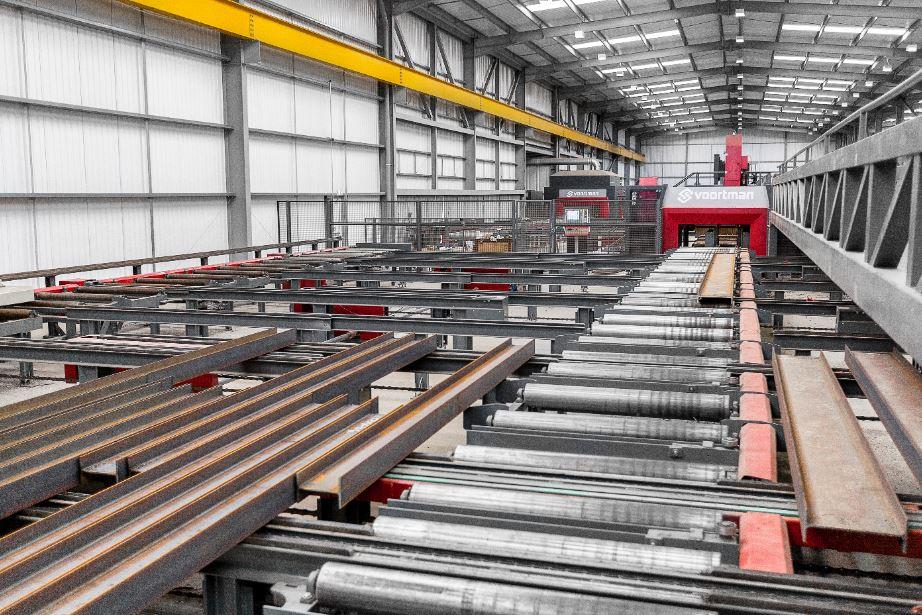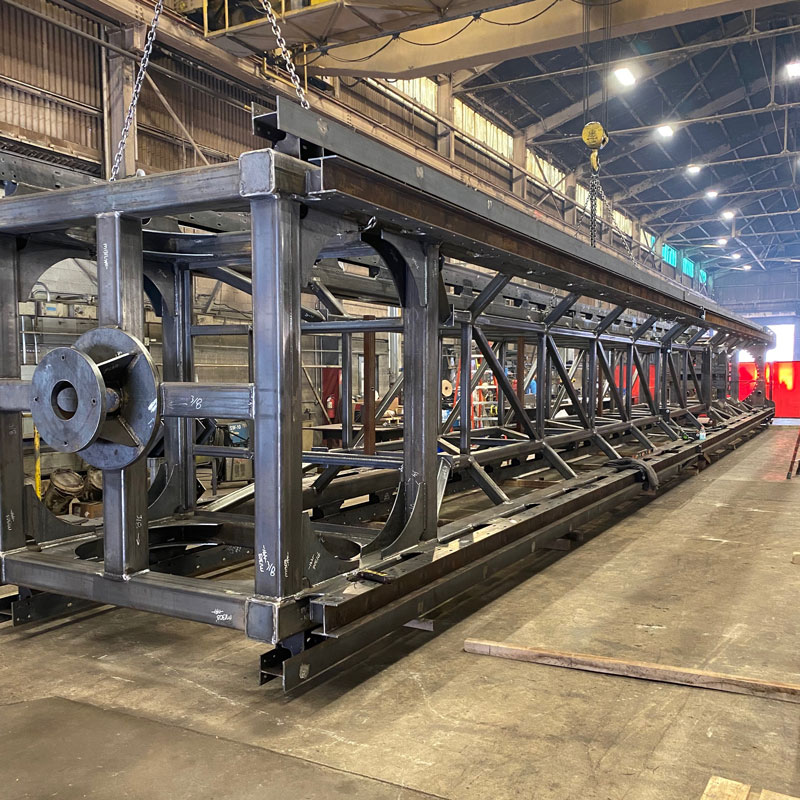Alpha Reo: Blazing A Trail in Reinforced Steel Solutions
Alpha Reo: Blazing A Trail in Reinforced Steel Solutions
Blog Article
Comprehensive Analysis of Cutting-Edge Techniques in Steel Fabrication Industry
As the steel construction industry continues to advance, the assimilation of cutting-edge methods has come to be necessary for remaining affordable and meeting the needs of modern-day manufacturing requirements. From laser cutting improvements to the application of robotics and 3D printing in steel manufacturing, the landscape of fabrication methods is swiftly transforming. With each development bringing its own collection of benefits and challenges, a thorough analysis of these techniques is paramount for companies aiming to enhance their procedures, improve precision, and eventually, raise the high quality of their steel fabrication outcome. In this dynamic industry where technology plays an essential function, comprehending the nuances of these cutting-edge methods is not simply an alternative yet a need for those looking to create in advance in the ever-evolving world of steel construction.
Laser Reducing Developments
In the realm of steel construction, laser cutting advancements have actually reinvented the accuracy and efficiency of steel shaping procedures. By taking advantage of the power of focused laser light beams, makers can now achieve unrivaled degrees of accuracy when puncturing various kinds of steels. This innovation enables intricate designs to be carried out with very little product wastage, making it an affordable option for sectors needing high precision components.
Among the crucial benefits of laser cutting is its capability to manage a variety of materials, including stainless steel, aluminum, and carbon steel, with ease. The procedure generates tidy, burr-free edges, getting rid of the demand for extra ending up actions. The non-contact nature of laser cutting minimizes the threat of product contamination, resulting in greater top quality end products.
In addition, laser cutting makers can be configured to make swift, precise cuts, dramatically decreasing production time compared to typical cutting approaches. This speed and accuracy make laser cutting particularly ideal for automation environments where efficiency is critical. As innovation proceeds to development, laser cutting is poised to play an increasingly essential duty in the steel fabrication industry.

CNC Machining Innovations
The development of CNC machining modern technologies has introduced a new period of accuracy and effectiveness in the steel fabrication market. Computer Numerical Control (CNC) equipments have changed steel fabrication by supplying unmatched accuracy and repeatability in the production procedure. metal fabrication melbourne. One of the key innovations in CNC machining is the combination of innovative software application systems that make it possible for real-time monitoring and adjustments, bring about improved efficiency and high quality control
Additionally, the development of multi-axis CNC makers has permitted for the construction of complex steel components with detailed layouts that were formerly testing to produce. These machines can carry out a wide variety of machining operations, consisting of milling, boring, transforming, and grinding, all with high degrees of accuracy.
Moreover, the unification of automation and robotics in CNC machining has streamlined production procedures, reduced lead times, and minimized the margin of mistake. This integration of cutting-edge modern technologies not only enhances efficiency however also guarantees consistent high quality across all produced steel components. Finally, CNC machining developments remain to drive innovations in the steel manufacture sector, setting new standards for accuracy and productivity.
Automated Welding Technologies
Automated welding innovations have reinvented the steel construction industry, enhancing effectiveness and accuracy in the welding procedure. These sophisticated innovations make use of computer-controlled systems to automate the welding process, causing greater productivity levels and improved weld top quality. One of the key benefits of automated welding is the capacity to do complex welds with consistent precision, minimizing the probability of mistakes and revamp.
Robot welding systems are at the leading edge of automated welding innovations, supplying unrivaled rate and accuracy. These systems can handle a vast array of welding jobs, from easy to detailed, with simplicity (Alpha reo). By using advanced sensors and software, robot welders can adapt to variations in product and joint geometry, making certain an uniform and reputable weld
In addition, automated welding innovations improve office security by lessening the exposure of human welders to harmful fumes and intense heat. As the steel manufacture industry remains to evolve, integrating automated welding technologies will be important for business aiming to stay competitive and satisfy the growing needs for top quality bonded items.
Robotics Combination in Fabrication
Using robot systems in fabrication procedures has actually ended up being an essential method for boosting performance and precision in modern manufacturing atmospheres. Robotics assimilation in steel construction uses a myriad of advantages, consisting of raised efficiency, boosted quality assurance, and improved precaution. These innovative robotic systems are geared up with innovative sensors and programming abilities, permitting them to carry out intricate tasks with a high degree of accuracy and repeatability.
Among the vital advantages of robotics integration in steel fabrication is the capability to automate repeated tasks, such as product handling, reducing, welding, and setting up processes. This not only quickens manufacturing cycles however also minimizes the risk of human error, bring about greater total product top quality. Furthermore, robotics can run 24/7, dramatically increasing manufacturing output and meeting limited project deadlines.

3D Printing in Steel Manufacturing
Having transformed the steel manufacture industry through robotics assimilation, the growing expedition of 3D printing in steel production is positioned to additional advance the realm of modern production methods. 3D printing, additionally referred to as additive production, supplies unprecedented style liberty and complexity, allowing the development of detailed steel frameworks that were previously unattainable via conventional manufacturing approaches. By using computer-aided layout (CAD) software application, makers can precisely regulate the click site layer-by-layer deposition of steel product, leading to components with boosted capabilities and geometries.
One of the essential advantages of 3D printing in steel manufacturing is its capacity to lower product waste significantly. Unlike subtractive production procedures where excess material is trimmed away, 3D printing just makes use of the required amount of steel needed for the final part. This efficiency not only results in set Our site you back savings however also lines up with sustainable manufacturing practices by decreasing environmental influence.
Furthermore, 3D printing makes it possible for rapid prototyping and personalization, enabling the production of small batches of intricate steel components with brief lead times. As the innovation proceeds to develop and come to be much more obtainable, its integration right into mainstream steel manufacture processes is expected to drive development and efficiency across the market.
Conclusion
Finally, the steel manufacture industry has seen considerable innovations in techniques such as laser cutting, CNC machining, automated welding, robotics integration, and 3D printing. These cutting-edge technologies have revolutionized the way steel products are manufactured, causing increased precision, cost-effectiveness, and effectiveness. Continued financial investment in these ingenious strategies is important for the sector to remain competitive and fulfill the needs of modern-day manufacturing procedures.
As the steel fabrication industry proceeds to advance, the combination of advanced techniques has actually ended up being vital for remaining competitive and meeting the demands of contemporary production requirements.One of the crucial advantages of laser cutting is its capability to deal with a vast variety of materials, including stainless steel, aluminum, and carbon steel, with convenience.Automated welding redirected here technologies have actually revolutionized the steel construction industry, boosting efficiency and precision in the welding process.Having revolutionized the steel construction sector through robotics combination, the expanding exploration of 3D printing in steel manufacturing is positioned to additional advancement the world of modern manufacturing methods.In final thought, the steel construction market has seen substantial innovations in methods such as laser cutting, CNC machining, automated welding, robotics assimilation, and 3D printing.
Report this page